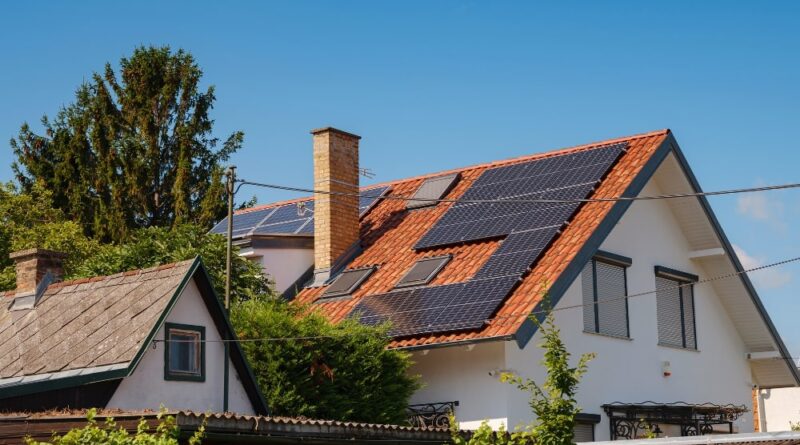Choosing the right solar panels for your home doesn’t have to be complicated. While there are three main types of solar panels available on the market – monocrystalline, polycrystalline, and thin-film – each has its unique benefits and drawbacks. The best choice depends on your specific needs, available space, and budget. Let me guide you through the details of each type to help you make an informed decision.
Spis treści:
Types of Solar Panels Explained
Monocrystalline panels stand out as the most efficient option, typically converting 15-22% of sunlight into electricity. These panels feature a distinctive black color due to their construction from single-crystal silicon. While they come with a higher price tag, they require less space and perform better in warm weather. This makes them an excellent choice for residential installations where roof space might be limited.
Polycrystalline panels, recognizable by their bluish appearance, offer efficiency ratings between 13-17%. They cost less than monocrystalline panels because of their simpler manufacturing process, which uses multiple silicon crystals instead of a single one. While they might need more space to produce the same amount of power, they can still serve as an excellent middle-ground option for many homeowners.
Thin-film panels are the most flexible and lightweight option, though they offer the lowest efficiency at 10-12%. They require significantly more space than crystalline panels but shine in specific applications where weight and flexibility matter most. You’ll often find them in large commercial installations or unique architectural projects where traditional panels wouldn’t work.
Factors to Consider When Choosing
Available space plays a crucial role in your decision. If you have limited roof space, monocrystalline panels might be your best bet due to their higher efficiency. However, if space isn’t a constraint, you might find polycrystalline or even thin-film panels more cost-effective. Climate also matters – monocrystalline panels typically perform better in hot weather, while polycrystalline panels maintain steady efficiency across various conditions.
Budget considerations often influence the final choice. While monocrystalline panels cost more upfront, their higher efficiency could mean better long-term savings. Polycrystalline panels offer a good balance of cost and performance, making them popular among homeowners. Thin-film panels, despite their lower efficiency, might prove economical for large-scale installations where space isn’t a premium.
Installation and Maintenance
Each type requires different installation considerations. Monocrystalline and polycrystalline panels typically need robust mounting systems due to their weight and rigid structure. Thin-film panels offer more flexibility in installation but might need additional protection against environmental factors. All types require regular cleaning and maintenance, though the frequency depends on your local environment and weather conditions.
Making Your Decision
Consider starting with an energy audit of your home to determine your power needs. This will help you calculate how many panels you’ll need and whether your available space can accommodate them. Remember to factor in both current and future energy needs, as well as any planned home expansions or increased energy usage. Local weather patterns and the orientation of your roof should also influence your choice.
Consulting with a qualified solar installer can provide valuable insights specific to your situation. They can assess your property’s unique characteristics and recommend the most suitable panel type based on your budget, space constraints, and energy goals. Whatever type you choose, ensuring proper installation and maintenance will help maximize your investment’s returns.
